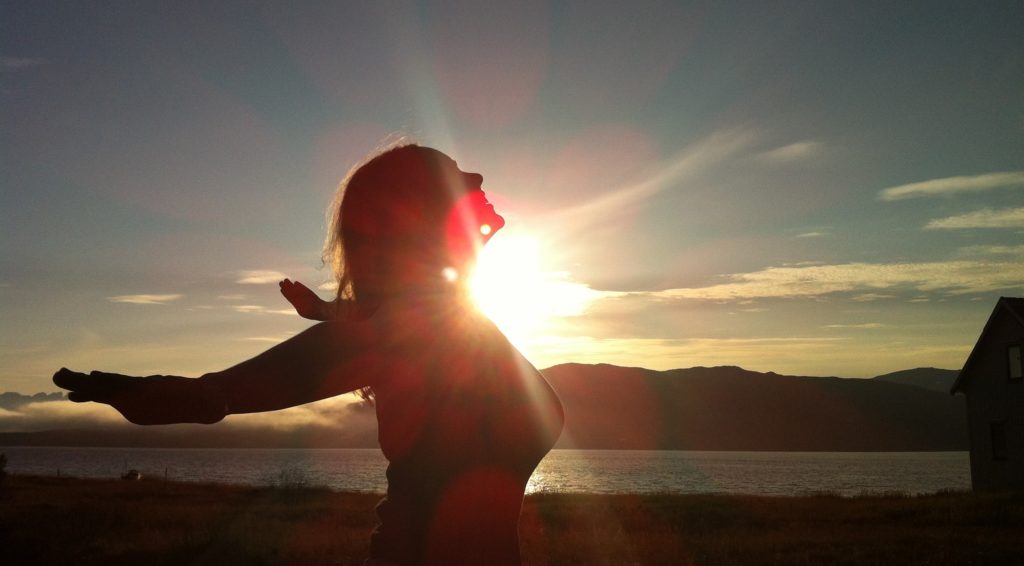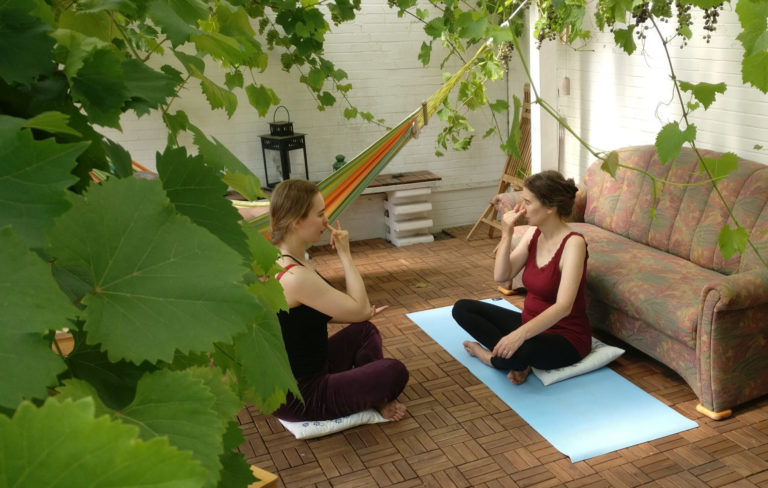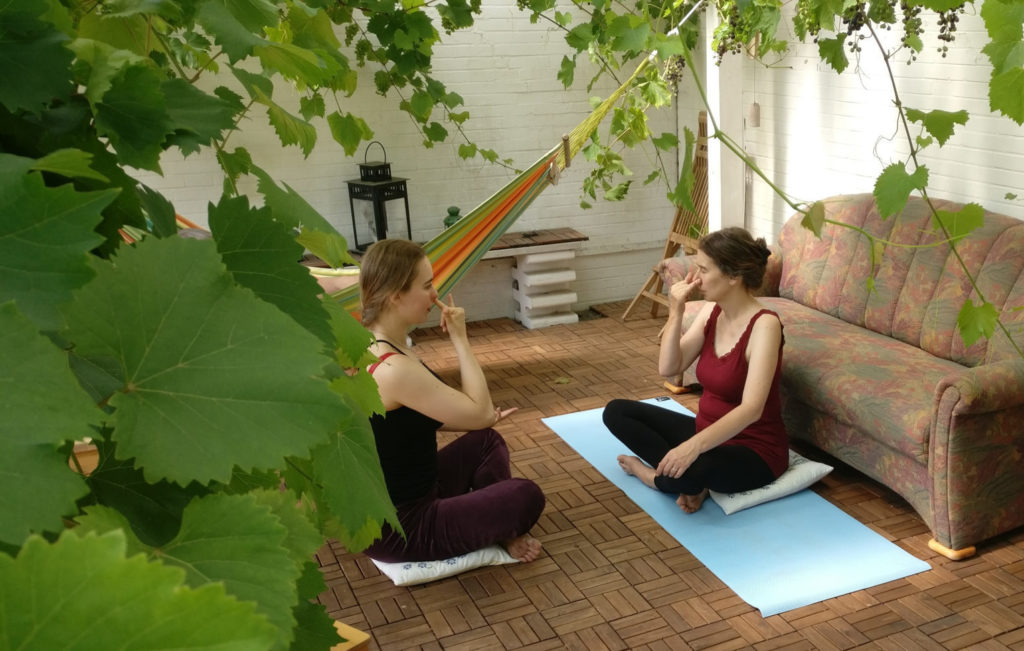Pranayama - or mastering the Breath

“As the wind drives smoke and impurities from the atmosphere, pranayama drives away the impurities of the body and mind.”
– B.K.S. Iyengar
Pranayama is the fourth stage or limb of Ashtanga Yoga and its purpose is the union of mind and body through breath. Practicing Pranayama is repeating several rounds of conscious and sometimes quite unusual breathing patterns and -techniques. Breathing is normally unconscious and yet millenia of mindful breathing practice come to the same conclusion as modern science – the effect of certain breathing patterns on our mental and physical state are startling to say the least.
“When you own your breath, nobody can steal your peace. ” ~Author Unknown

I teach Pranayama without a lot of explanation: The results are either so immediate, that understanding happens quicker through experience, or they are subtle and require attention on experience and not on theory. With the exercises that I teach not a lot can go wrong. Sometimes, depending on my student’s needs, we start with some shoulder openers or the singing of a mantra to help the body release and to ease into focusing on the breath.
Generally, however, time is dedicated to the breathing techniques without much introduction so as to leave some space to finish with a meditation.
“The breath knows how to go deeper than the mind.” – Wim Hof
One very popular practicioner these days is Wim Hof aka “The Iceman” who uses a certain version of the Tibetan Tummo meditation and Pranayama to overcome trauma, perform staggering Guinnes World Records and manipulate the autonomous nervous system.
This is unusual, of course, but he has proven through many tests under scientific scrutiny that he is not simply a “freak of nature” but uses simple techniques that anyone can learn.
Now, not everyone would want to climb Mount Kilimandscharo in their shorts, but improved mental clarity, better immune functions and a lightened mood are certainly things nobody would reject – and they are in much sooner reach too. It does not take long to see these improvements take shape.
As a matter of fact this is me after just two months of practice “breaking the ice” in a Norwegian mountain lake and “meditating away the snow“. 😉
In the latter, the wind distorts any talking in the first two minutes, then it’s okay. Just skip to there, maybe, if you are interested. Sorry for that.
“As the wind drives smoke and impurities from the atmosphere, pranayama drives away the impurities of the body and mind.”
– B.K.S. Iyengar
Pranayama is the fourth stage or limb of Ashtanga Yoga and its purpose is the union of mind and body through breath. Practicing Pranayama is repeating several rounds of conscious and sometimes quite unusual breathing patterns and -techniques. Breathing is normally unconscious and yet millenia of mindful breathing practice come to the same conclusion as modern science – the effect of certain breathing patterns on our mental and physical state are startling to say the least.
“When you own your Breath, nobody can steal your peace.”
~ Author Unknown

I teach Pranayama without a lot of explanation: The results are either so immediate, that understanding happens quicker through experience, or they are subtle and require attention on experience and not on theory. With the exercises that I teach not a lot can go wrong. Sometimes, depending on my student’s needs, we start with some shoulder openers or the singing of a mantra to help the body release and to ease into focusing on the breath.
Generally, however, time is dedicated to the breathing techniques without much introduction so as to leave some space to finish with a meditation.
“The breath knows how to go deeper than the mind.” – Wim Hof
One very popular practicioner these days is Wim Hof aka „The Iceman“ who uses a certain version of the Tibetan Tummo meditation and Pranayama to overcome trauma, perform staggering Guinnes World Records and manipulate the autonomous nervous system.
This is unusual, of course, but he has proven through many tests under scientific scrutiny that he is not simply a „freak of nature“ but uses simple techniques that anyone can learn.
Now, not everyone would want to climb Mount Kilimandscharo in their shorts, but improved mental clarity, better immune functions and a lightened mood are certainly things nobody would reject – and they are in much sooner reach too. It does not take long to see these improvements take shape.
As a matter of fact this is me after just two months of practice “breaking the ice” in a Norwegian mountain lake and “meditating away the snow“. 😉
In the latter, the wind distorts any talking in the first two minutes, then it’s okay. Just skip to there, maybe, if you are interested. Sorry for that.